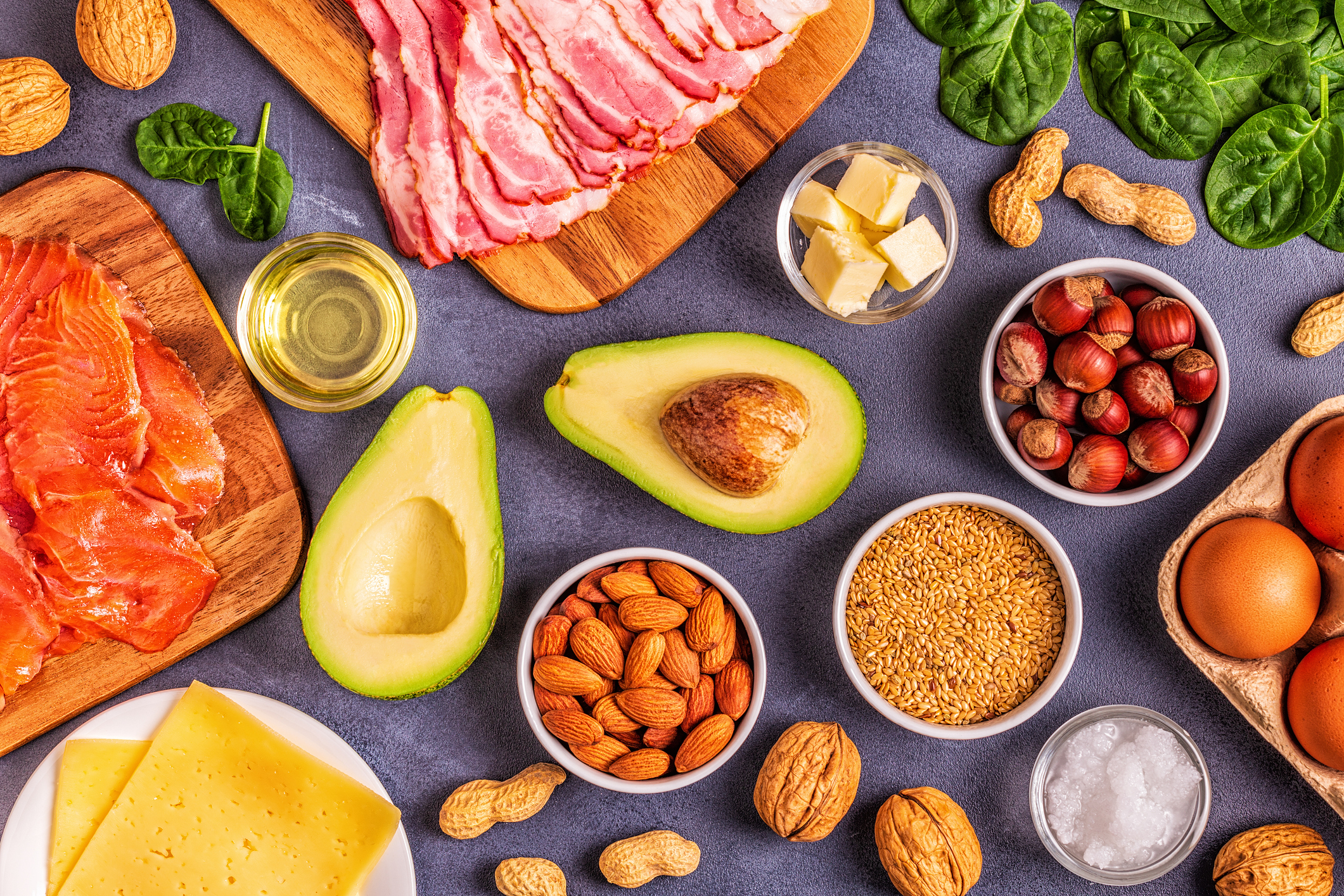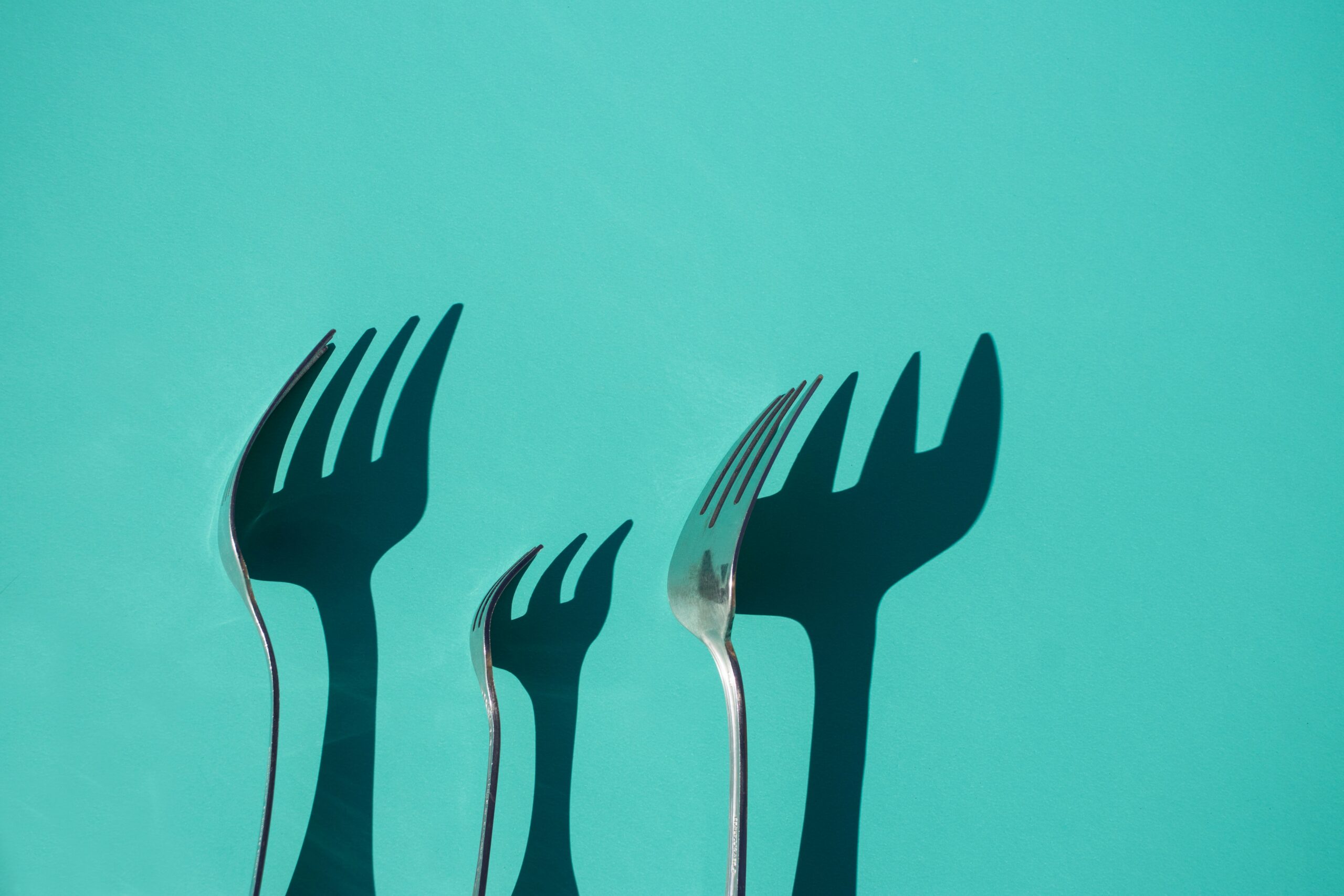As anyone following a low carb lifestyle can undeniably attest, the daily food and drink choices one makes can have a profound effect on metabolic responses. Just like different foods make up a variety of nutrients, offer distinct benefits, and impact metabolism uniquely, wines are just as varied in composition, influencing metabolism differently in their own right. While the distinguishing health implications among various foods can be quite obvious – the impact of a dozen raspberries is different from a bowl of cereal or a candy bar – all wines are often considered the same: an alcoholic beverage with a grape-like taste. But this could not be further from the truth. In fact, just as wines vary in taste, they also diverge in how they’re processed in the body. To understand the differences, it’s helpful to understand the powerhouse compounds found in wine called polyphenols, why they’re so beneficial for us, and the effect different wines can have on our metabolic fat burn process.
What are polyphenols?
Polyphenols are phytochemicals, or chemical compounds, produced by fruits and vegetables that enable them to fight off harmful threats like fungi, bacteria, viruses, insects, and animals(1). In nature, there are more than 8,000 polyphenolic compounds that are found throughout the skins, stems, and seeds of various plants. Polyphenols are generally divided into two major groups, flavonoids and non-flavonoids. The major difference between them is their chemical structure, with non-flavonoids possessing only one phenol ring while flavonoids have two. For this reason, flavonoids are more complex. Nearly two-thirds of the polyphenols in the human diet are flavonoid compounds.
What are some common polyphenols, and what is their function in plants?
Anthocyanins are a type of polyphenol that is predominantly found in the skin of plants that are the pigment compounds that result in red, purple, violet, and blue colors in flowers and fruits. These pigments play an important role in protecting the plant from “sunburn” damage from potent UV rays and also protect against cold temperatures(2). They play the dual role of attracting helpful pollinators and also repelling harmful herbivores and parasites. The number of anthocyanins present influences the color of the plant and can help camouflage it with its background, deterring attacks from predators.
Proanthocyanidins, commonly known as tannins, contribute bitter flavors to plants which help deter many predators and foragers, though oftentimes rendering the plant indigestible altogether. Hungry insects and animals would rather move along to something that tastes a little sweeter.
The polyphenols in wine
Dietary sources of polyphenols are found in fruits, vegetables, cereal grains, legumes, cacao, tea, and, of course, wine(3). Polyphenols are mostly found in red wines and play many roles, protecting the grapes from UV damage and shielding them from predatory attacks in the vineyard. These compounds also contribute aroma and flavor characteristics along with giving texture, structure, stability, and aging potential to finished wines.
The types and concentrations of polyphenols in each wine are the result of the many choices winemakers make during viticulture (grape growing) and vinification (winemaking). First, the variety of grapes must be considered. The amount of polyphenols in red wine is, on average, 10-fold higher than white wines, so there is a natural genetic difference in the way that red, black, and white grapes synthesize polyphenols. Amongst the red and black grape varieties, this holds true as well, and there is a wide spectrum of total polyphenols present from one grape variety to the next.
Grape varieties with the highest naturally-occurring polyphenols include:
Sagrantino (Umbria, Italy)
Tannat (Cahors, France)
Petite Sirah (California, USA)
Aglianico (Basilicata and Campania, Italy)
Other factors also influence the total amount of polyphenols in the finished wine, including the maturity or age of the vines, a water deficit or stress on the vines, vineyard management methods, the length of maceration, the types of yeast strains used to evoke fermentation, fining and filtration practices, and oak/wood aging(4).
A grape’s growth environment, weather, and climate also play a role in its polyphenol formation, where more stress often leads to more polyphenol production. For instance, limiting the water supply, whether from a lack of rain or restricted irrigation, leads grapevines to struggle. This struggle can cause more of the defensive polyphenol compounds(5,6) to synthesize. Also, predators like herbicides that threaten the grapes and vines will prompt them to produce more defensive polyphenols.
Decisions made during the winemaking process also have a significant impact on polyphenols. For example, sometime before bottling wines, a winemaker may choose to fine and/or filter the wine to smooth it out and reduce an astringent taste. During this process, an external substance like egg albumin or gelatin is added to the wine to attract suspended particles, which are then filtered out and removed. Unfortunately, these precipitants contain many of the beneficial polyphenols, so smoothing out the wine may have the adverse consequence of pulling out many of the polyphenols(7,8). These solids can also be removed by filtering the wine through various pore sizes. Other practices, like aging wine in oak, can leach additional polyphenols into the wine(4,9).
The powerful impact of polyphenols on our health
Polyphenols wear several critical hats when it comes to our health, serving as crusaders against free radicals, stimulating metabolic pathways, and playing a regulatory role in gene expression(10,11).
Polyphenols help us fight free radical damage
Oxidative stress is a normal phenomenon in the body that occurs where there is a disproportionate amount of prooxidants or reactive oxygen species (ROS) to antioxidants(12). Our cells can sense this difference and engage mechanisms to produce antioxidants to reduce the risk of damage(2). Oversimplified descriptions usually equate prooxidants as harmful and antioxidants as beneficial, however, in reality, it is a far more nuanced discussion. In fact, our own cellular machinery, like our powerhouse mitochondria, produce endogenous ROS during their normal functioning. These ROS then trigger our antioxidant production machinery, among other normal cellular mechanisms.
An excessive amount of exogenous (external) sources of ROS may overwhelm our antioxidant defense systems and free radical scavengers, resulting in cellular and DNA damage. Common exogenous ROS include air pollutants, cigarette smoke, and radiation. Lesser-known mechanisms of producing endogenous (internal) ROS formation include strenuous physical exercise, fasting, and consuming polyphenols, all of which are indispensable for health and well-being(13,14). These activities can act in both prooxidant and antioxidant capacities by stimulating our cellular production of antioxidant production and “exercising” our cells by stressing them.
ROS, especially those endogenous sources produced within our bodies, play an instrumental role in cellular development and optimal bodily function(14). Without prooxidant mechanisms, cells would not undergo stress or be able to mount repair or immune responses(15). In low or controlled amounts, they support normal cell function, but in high concentrations they can promote unwanted changes to cell components, causing damage to lipids and proteins. The body has mechanisms to offset this potential damage, especially when the free radicals are produced from our own cells. This is where polyphenols come into play. Polyphenols are sensed by our cells as a threat and engage these defensive mechanisms. While polyphenols are of course not an actual threat, the body still goes on to sound an alarm bell and turn on genes that produce antioxidants and other beneficial agents.
A useful illustration of this is the activation of the Nrf2-ARE (antioxidant responsive element) pathway by polyphenols which launches the transcription of a slew of genes that turn on Phase II detoxification(16). This process takes potentially damaging chemicals, conjugates them, and leaves them harmless by dissolving them in water and excreting them from the body.
Polyphenols stimulate our metabolism via enzymatic activity and engage autophagy
Polyphenols also increase the production of various enzymes that contribute to longevity, metabolism, DNA repair, and anti-inflammatory activities. Enzymes known as sirtuins are also metabolic sensors, although unlike sensing free radicals from above, they sense an array of stressors like energy depletion, exercise, fasting, and polyphenols(17–19). Sirtuins are also linked to another enzyme called AMPK (adenosine monophosphate kinase). Acting as another cellular alarm, AMPK senses low energy availability in our cells, turning on several mechanisms to break down energy sources like glucose and fats, enhances metabolism and insulin sensitivity, and even prompts our cells to break down their faulty parts and recycle them, a process known as autophagy(20). Closing the loop on all of these cellular stress mechanisms, AMPK also increases the production of Nrf-2, triggering antioxidant defense mechanisms and detoxification(2).
Polyphenols turn off genes that may cause inflammation
In addition, polyphenols have been shown to interact with NF-κB, a protein complex that plays a role in pro-inflammatory cytokine production, leukocyte response, and cell survival(21). Polyphenols are able to run interference between NF-κB and DNA, blocking its translocation into the nucleus which, in turn, disrupts gene regulation that is linked to inflammation and cell overproliferation, both of which are hallmarks in chronic disease(22).
Beneficial wine polyphenols as seen in the real world
Wine drinking in the name of health promotion has been practiced widely in various circles around the world. Perhaps the most well-known example of wine’s contribution to health can be illustrated by The French Paradox, a phenomenon studied by scientists which refers to the low rates of coronary heart disease observed in the French population despite a diet rich in saturated fats. Some studies concluded that this could be partly explained by the moderate consumption of red wine in the presence of food22 among the French. In addition, the Mediterranean Diet, enjoyed by countries surrounding the Mediterranean Sea including Greece, Italy, and Spain, has been highly promoted by health experts as an optimal diet for overall health with its emphasis on polyphenols from sources such as locally-produced olive oils, beans, nuts, vegetables, and regional wines.
Is it possible to enjoy wine on a low-carb lifestyle?
Nowadays, more and more consumers and wine aficionados have been pursuing healthier wines to enjoy. One particularly popular trend of low-carb followers is that of “keto wines.” This terminology, however, is mostly a marketing ploy, as no wine promotes ketosis. Some wines are just better at knocking people out of it.
This is usually due to the amount of sugar in the wine, yet most wines available to consumers, with the exception of fortified wines or wines that are intentionally made to be sweeter in style, are very low in carbohydrates. Fundamentally, through the process of fermentation, yeast feast on available sugars and convert them to alcohol, leaving behind only residual amounts. Most dry red wines are left with only 1 to 3 g/L of residual sugar or 1.7 total carbs (alcohol + residual sugar) in a standard 5-ounce pour. One to two glasses at this amount of sugar is unlikely to knock most people out of ketosis.
So, can you drink wine and still be in ketosis? The short answer is yes. But because your liver will try to process the alcohol as quickly as possible, it will temporarily turn its attention away from oxidizing fat and other nutrients. This means that while you can still remain in ketosis, drinking wine may slow the process down. So while it won’t necessarily knock you out of it completely, it may temporarily delay it.
It’s important to remember that not all forms of alcohol, including wine, are equal on the keto diet. Beer and certain wines should be off-limits due to their excessive carbohydrates load. Fortunately, there are a number of wines that are low in carbohydrates. Stick to dry wines, sparkling wines marked as “brut nature,” “extra brut,” or “brut.”
Ultimately, when it comes to enjoying wines and considering them in the context of health, moderation is the key. It is possible to enjoy wine while following a low-carb diet, and it is also important to consider the source of wines. But, by investing a little time into learning how the grapes are grown and how the wines are finished, we can also find keto-friendly wines that are richer sources of polyphenols. While one serving of polyphenol-rich wine won’t make or break your health, if you routinely enjoy a glass of wine, it is worth making more informed decisions to get the most out of your wine-drinking experience.
A Biosense® Best Practice Reminder: After consuming alcohol, it’s best to wait until the next day to record the measurement in order to protect the Biosense® sensor.
Note: This article was co-authored by oncologist, wine aficionado, and Biosense® scientific advisor, Colin Champ, MD, and his wife Juli, a level 3 WSET with distinction. If you are interested in learning more about wines aligning with a low-carb lifestyle, visit www.healthiestpour.com.
- Dryden, G. W., Song, M. & McClain, C. Polyphenols and gastrointestinal diseases. Current Opinion in Gastroenterology 22, 165–170 (2006).uf
- Chedea, V. S. et al. Antioxidant/Pro-Oxidant Actions of Polyphenols From Grapevine and Wine By-Products-Base for Complementary Therapy in Ischemic Heart Diseases. Front. Cardiovasc. Med. 8, (2021).
- Scalbert, A., Johnson, I. T. & Saltmarsh, M. Polyphenols: antioxidants and beyond. Am. J. Clin. Nutr. 81, 215S-217S (2005).
- Champ, C. E. & Kundu-Champ, A. Maximizing Polyphenol Content to Uncork the Relationship Between Wine and Cancer. Front. Nutr. 6, 44 (2019).
- Casassa, L. F. et al. Impact of extended maceration and regulated deficit irrigation (RDI) in Cabernet Sauvignon wines: characterization of proanthocyanidin distribution, anthocyanin extraction, and chromatic properties. J. Agric. Food Chem. 61, 6446–57 (2013).
- Mirás-Avalos, J. M. & Intrigliolo, D. S. Grape Composition under Abiotic Constrains: Water Stress and Salinity. Front. Plant Sci. 8, 851 (2017).
- Kalkan Yıldırım, H. Effects of Fining Agents on Antioxidant Capacity of Red Wines. J. Inst. Brew 117, (2011).
- Marangon, M., Vincenzi, S. & Curioni, A. Wine Fining with Plant Proteins. Molecules 24, (2019).
- Michel, J. et al. Impact of Concentration of Ellagitannins in Oak Wood on Their Levels and Organoleptic Influence in Red Wine. J. Agric. Food Chem. 59, 5677–5683 (2011).
- Salehi, B. et al. Resveratrol: A double-edged sword in health benefits. Biomedicines 6, (2018).
- Maiuolo, J. et al. Nutraceuticals and cancer: Potential for natural polyphenols. Nutrients 13, (2021).
- Birben, E., Sahiner, U. M., Sackesen, C., Erzurum, S. & Kalayci, O. Oxidative stress and antioxidant defense. World Allergy Organization Journal 5, 9–19 (2012).
- Sjödin, B., Westing, Y. H. & Apple, F. S. Biochemical Mechanisms for Oxygen Free Radical Formation During Exercise. Sport. Med. 10, 236–254 (1990).
- Nieman, D. C. & Wentz, L. M. The compelling link between physical activity and the body’s defense system. Journal of Sport and Health Science 8, 201–217 (2019).
- Radak, Z., Chung, H. Y., Koltai, E., Taylor, A. W. & Goto, S. Exercise, oxidative stress and hormesis. Ageing Res. Rev. 7, 34–42 (2008).
- Martínez-Huélamo, M., Rodríguez-Morató, J., Boronat, A. & de la Torre, R. Modulation of Nrf2 by Olive Oil and Wine Polyphenols and Neuroprotection. Antioxidants 6, 73 (2017).
- Bassett, S. A. & Barnett, M. P. G. The role of dietary histone deacetylases (HDACs) inhibitors in health and disease. Nutrients 6, 4273–301 (2014).
- Lekli, I., Ray, D. & Das, D. K. Longevity nutrients resveratrol, wines and grapes. Genes Nutr. 5, 55 (2010).
- Rahnasto-Rilla, M. et al. Natural polyphenols as sirtuin 6 modulators. Sci. Rep. 8, 4163 (2018).
- Zang, M. et al. Polyphenols stimulate AMP-activated protein kinase, lower lipids, and inhibit accelerated atherosclerosis in diabetic LDL receptor-deficient mice. Diabetes 55, 2180–2191 (2006).
- Karunaweera, N., Raju, R., Gyengesi, E. & Münch, G. Plant polyphenols as inhibitors of NF-ÎoB induced cytokine production—a potential anti-inflammatory treatment for Alzheimer’s disease? Front. Mol. Neurosci. 8, 24 (2015).
- Rifler, J.-P. Is a Meal without Wine Good for Health? Dis. (Basel, Switzerland) 6, (2018).



